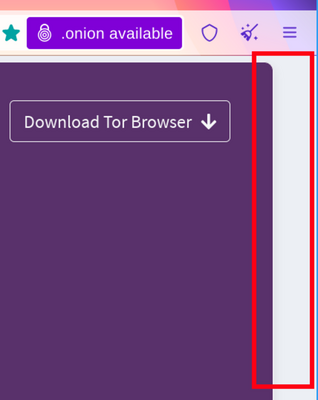Selaimen sormenjälkien ymmärtäminen
Selaimen yksilöinti tarkoittaa järjestelmällistä tiedonkeruuta selaimesta sen yksilöimiseksi tai sen ominaisuuksien selvittämiseksi.
Selainten asetukset ja toiminnot muodostavat niiden yksilöllisen tunnisteen.
Useimmat selaimet luovat käyttäjille yksilölliset tunnisteet, joita voidaan seurata internetissä.
Tarkempia tietoja selaimen sormenjälkien ottamisesta on seuraavissa Tor-blogin artikkeleissa: Browser Fingerprinting: An Introduction and the Challenges Ahead ja Tor Browser: perintö yksityisen selausinnovaatioiden edistämisestä.
Miksi selaimen sormenjälkien ottaminen uhkaa verkkotilassa olevaa yksityisyyttä?
Ensinnäkään näiden tietojen keräämiseen ei tarvitse pyytää lupaa käyttäjältä.
Mikä tahansa selaimessa suoritettava komentosarja voi luoda laitteesta yksilöllisen tunnisteen jopa käyttäjän huomaamatta.
Toisekseen jos jokin selaimen yksilöllisen tunnisteen ominaisuus tai ominaisuuksien yhdistelmä on ainutlaatuinen, laite voidaan tunnistaa ja sitä voidaan seurata verkossa.
Tämä tarkoittaa sitä, että vaikka evästeet eivät olisikaan käytössä, laitetta voidaan seurata sen yksilöllisen tunnisteen avulla.
Kuinka Tor Browser lieventää sormenjälkien ottamista
Tor Browser on erityisesti suunniteltu minimoimaan jokaisen käyttäjän sormenjäljen ainutlaatuisuus eri mittareilla.
Vaikka on käytännössä mahdotonta tehdä kaikista Tor Browserin käyttäjistä identtisiä, tavoitteena on vähentää kunkin mittarin erotettavissa olevien "ämpärien" määrää.
Tämä lähestymistapa hankaloittaa yksittäisten käyttäjien tehokasta seurantaa.
Tietyt ominaisuudet, kuten käyttöjärjestelmä ja kieli, ovat toimintojen kannalta välttämättömiä, eikä niitä voi piilottaa tai salata täysin.
Sen sijaan Tor Browser rajoittaa näiden ominaisuuksien lajiketta erottuvuuden vähentämiseksi.
Se esimerkiksi rajoittaa kirjasinten luettelointia ja soveltaa merkkien varaa, standardoi näyttöjen ja ikkunoiden koot käyttämällä letterboxingia, ja rajoittaa pyydettyjen kielten valikoiman pieneen ennalta määritettyyn joukkoon.
Tor Browserin sormenjälkien ottamista estävän suojauksen päätavoite on tehdä huomattavasti haastavammaksi kerätä tarpeeksi tietoa käyttäjien yksilöimiseksi, mikä parantaa yksityisyyttä vaarantamatta tarvittavia toimintoja.
Tor Browserin sormenjälkien ottamisesto-ominaisuudet
Kirjelaatikointi
Näytön mittoihin perustuvan sormenjälkien oton estämiseksi Tor Browser käynnistyy sisältöikkunan, joka on pyöristetty 200 x 100 pikselin kerrannaiseksi.
Tässä strategiana on sijoittaa kaikki käyttäjät muutamaan ämpäriin, jotta heidän erottaminen on vaikeampaa.
Tämä toimii aina siihen asti, kunnes käyttäjä muuttaa selainikkunan kokoa (esimerkiksi suurentamalla sen tai siirtymällä koko näytön tilaan).
TorBrowser toimittaa myös näihin skenaarioihin sormenjälki-suojauksen, jota kutsutaan Letterboxingiksi, Mozillan kehittämäksi ja vuonna 2019 esitellyksi tekniikaksi.
Se toimii lisäämällä marginaaleja selainikkunaan niin, että ikkuna on mahdollisimman lähellä haluttua kokoa, kun käyttäjät ovat vielä parissa näytön kokoämpärissä, jotka estävät niiden erottamisen näytön mittojen avulla.
Lyhyesti sanottuna tässä tekniikassa luodaan käyttäjäryhmiä näytön koon perusteella, ja tämä vaikeuttaa käyttäjien yksilöintiä näytön koon perusteella, sillä useilla käyttäjillä on samankokoiset näytöt.

Muita sormenjälkiä estäviä ominaisuuksia
Letterboxingin lisäksi Tor Browser käyttää monia muita ominaisuuksia, jotka vähentävät selaimen sormenjälkiä ja suojaavat käyttäjien yksityisyyttä.
Näitä ominaisuuksia ovat Canvas-kuvanpurkamisen esto, NoScript-integrointi, käyttäjäagentinhuijaus ja ensimmäisen osapuolen eristäminen.
Täydellisen listan ominaisuuksista löydät Tor Browserin suunnittelma ja toteutus -tiedostosta.